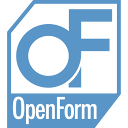Add Mesh für eine Tailor Rolled Platine¶
Die folgende Abbildung zeigt den Add Mesh Dialog für eine Tailor Rolled Platine.
![%%============================================================================================%%
%% DEFINTIONS %%
\SetPicture{13.1cm}
\clip (0,0) rectangle (\pw,\ph);
\setlength{\isX}{0.10\pw}
\setlength{\isY}{0.1045\pw}
%%============================================================================================%%
%% Table %%
\node[anchor=south, nosep] (N) at (0.50\pw,0.005\ph)
{
\begin{minipage}[b]{11cm}
\begin{center}
\begin{tabular}{|r|l|}
\hline
1&Im Objekt-Fenster markierte Platine.\\ \hline
2&Zurück zum Hauptmenü.\\ \hline
3&Aktiver Dialog, Add Mesh.\\ \hline
4&Netz auf CAD-Flächen erzeugen.\\ \hline
5&Netz zwischen umrandenden CAD-Kurven erzeugen.\\ \hline
6&Kreisförmiges Netz erzeugen.\\ \hline
7&Rechteckiges Netz erzeugen.\\ \hline
8&Netz zwischen umrandenden Polygonlinien erzeugen.\\ \hline
9&Netz zwischen umrandenden Balkenelementen erzeugen.\\ \hline
\end{tabular}
\end{center}
\end{minipage}
};
%%============================================================================================%%
%% PICTURE 1 %%
\node[anchor=south, nosep] (A) at ($(N.north)+(0.00\pw,0.01\pw)$) {
\includegraphics[trim=0pt 0pt 0pt 960pt, clip=true, width=0.39\pw]{\PicturePath/Dialogs/DialogAssignTailorRolledBlankAddMesh}
};
\node[anchor=south west, nosep] (B) at ($(A.north west)+(0.00\pw,0.00\pw)$) {
\includegraphics[trim=0pt 600pt 0pt 0pt, clip=true, width=0.39\pw]{\PicturePath/Dialogs/DialogAssignTailorRolledBlankAddMesh}
};
\draw[picmark] ($(B.north)+(-0.850\isX,-0.600\isY)$) rectangle ($(B.north)+(0.670\isX,-0.820\isY)$);
\draw[picline] ($(B.north)+(-0.090\isX,-0.600\isY)$) to ($(B.north)+(-0.090\isX,0.300\isY)$) node[piclabel]{1};
\draw[picline] ($(B.north east)+(0.000\isX,-1.030\isY)$) to ($(B.north east)+(0.450\isX,-1.030\isY)$) node[piclabel]{2};
\draw[picline] ($(B.north east)+(0.000\isX,-1.440\isY)$) to ($(B.north east)+(0.450\isX,-1.440\isY)$) node[piclabel]{3};
\draw[picline] ($(B.north east)+(0.000\isX,-1.950\isY)$) to ($(B.north east)+(0.450\isX,-1.950\isY)$) node[piclabel]{4};
\draw[picline] ($(B.north east)+(0.000\isX,-2.360\isY)$) to ($(B.north east)+(0.450\isX,-2.360\isY)$) node[piclabel]{5};
\draw[picline] ($(B.north east)+(0.000\isX,-2.770\isY)$) to ($(B.north east)+(0.450\isX,-2.770\isY)$) node[piclabel]{6};
\draw[picline] ($(B.north east)+(0.000\isX,-3.180\isY)$) to ($(B.north east)+(0.450\isX,-3.180\isY)$) node[piclabel]{7};
\draw[picline] ($(B.north east)+(0.000\isX,-3.590\isY)$) to ($(B.north east)+(0.450\isX,-3.590\isY)$) node[piclabel]{8};
\draw[picline] ($(B.north east)+(0.000\isX,-4.000\isY)$) to ($(B.north east)+(0.450\isX,-4.000\isY)$) node[piclabel]{9};
%%============================================================================================%%
%% TOOLS %%
%\PictureFrame](_images/tikz/tikz-DialogAssignTailorRolledBlankAddMesh.png)
Add Mesh Dialog für Tailor Rolled Platinen
Im Gegensatz zur einfachen Platine wird für eine Tailor Rolled Platine die Zuweisung eines vorhanden Netzes nicht unterstützt.
Die Unterschiede in der Zuweisung eines Netzes gegenüber der einfachen Platine werden hier am Beispiel der Zuweisung eines Netzes anhand von CAD-Flächen gezeigt. Für die übrigen Zuweisungsmethoden gilt analog das Gleiche.
Add Mesh From CAD Faces¶
Die folgende Abbildung zeigt den Add Mesh From CAD Faces Dialog für Tailor Rolled Platinen.
![%%============================================================================================%%
%% DEFINTIONS %%
\SetPicture{18.0cm}
\clip (0,0) rectangle (\pw,\ph);
\setlength{\isX}{0.10\pw}
\setlength{\isY}{0.101\pw}
%%============================================================================================%%
%% Table %%
\node[anchor=south, nosep] (N) at (0.50\pw,0.001\ph)
{
\begin{minipage}[b]{11cm}
\begin{center}
\begin{tabular}{|r|l|}
\hline
1&Zurück zum Add Mesh Dialog.\\ \hline
2&Aktiver Unterdialog, From CAD Faces.\\ \hline
3&CAD-Flächen laden, bzw. anzeigen.\\ \hline
4&Flächen zur Vernetzung selektieren.\\ \hline
5&Platinenbereiche definieren.\\ \hline
6&Netzparameter einstellen, selektierte Flächen vernetzen.\\ \hline
\end{tabular}
\end{center}
\end{minipage}
};
%%============================================================================================%%
%% PICTURE 1 %%
\node[anchor=south, nosep] (A) at ($(N.north)+(0.00\pw,0.01\pw)$) {
\includegraphics[trim=0pt 0pt 0pt 973pt, clip=true, width=0.35\pw]{\PicturePath/Dialogs/DialogAssignTailorRolledBlankAddMeshFromCADFaces}
};
\node[anchor=south west, nosep] (B) at ($(A.north west)+(0.00\pw,0.00\pw)$) {
\includegraphics[trim=0pt 157pt 0pt 0pt, clip=true, width=0.35\pw]{\PicturePath/Dialogs/DialogAssignTailorRolledBlankAddMeshFromCADFaces}
};
\draw[picline] ($(B.north east)+(0.000\isX,-1.340\isY)$) to ($(B.north east)+(0.450\isX,-1.340\isY)$) node[piclabel]{1};
\draw[picline] ($(B.north east)+(0.000\isX,-1.720\isY)$) to ($(B.north east)+(0.450\isX,-1.720\isY)$) node[piclabel]{2};
\draw[picline] ($(B.north east)+(0.000\isX,-2.480\isY)$) to ($(B.north east)+(0.450\isX,-2.480\isY)$) node[piclabel]{3};
\draw[picline] ($(B.north east)+(0.000\isX,-3.830\isY)$) to ($(B.north east)+(0.450\isX,-3.830\isY)$) node[piclabel]{4};
\draw[picline] ($(B.north east)+(0.000\isX,-5.130\isY)$) to ($(B.north east)+(0.450\isX,-5.130\isY)$) node[piclabel]{5};
\draw[picline] ($(B.north east)+(0.000\isX,-7.400\isY)$) to ($(B.north east)+(0.450\isX,-7.400\isY)$) node[piclabel]{6};
%%============================================================================================%%
%% TOOLS %%
%\PictureFrame](_images/tikz/tikz-DialogAssignTailorRolledBlankAddMeshFromCADFaces.png)
Add Mesh From CAD Faces Dialog für Tailor Rolled Platinen
In den Add Mesh Dialogen für eine Tailor Rolled Platine ist im Unterschied zu den Dialogen für eine einfache Platine der Dialogabschnitt Set Regions aktiv. Bevor Sie die Bereiche der verschiedenen Blechdicken definieren können müssen Sie zunächst CAD-Flächen zur Netzerzeugung laden und auswählen. Daraufhin ändert sich die Farbe des Dialogabschnittstitels Set Regions und wird nun in blauer Farbe dargestellt, siehe nächste Abbildung.
![%%============================================================================================%%
%% DEFINTIONS %%
\SetPicture{15.2cm}
\clip (0,0) rectangle (\pw,\ph);
\setlength{\isX}{0.10\pw}
\setlength{\isY}{0.10\pw}
%%============================================================================================%%
%% PICTURE 1 %%
\node[anchor=south, nosep] (A) at (0.50\pw,0.00\pw) {
\includegraphics[trim=0pt 0pt 0pt 973pt, clip=true, width=0.35\pw]{\PicturePath/Dialogs/DialogAssignTailorRolledBlankAddMeshFromCADFacesSelected}
};
\node[anchor=south west, nosep] (B) at ($(A.north west)+(0.00\pw,0.00\pw)$) {
\includegraphics[trim=0pt 157pt 0pt 0pt, clip=true, width=0.35\pw]{\PicturePath/Dialogs/DialogAssignTailorRolledBlankAddMeshFromCADFacesSelected}
};
%%============================================================================================%%
%% TOOLS %%
%\PictureFrame](_images/tikz/tikz-DialogAssignTailorRolledBlankAddMeshFromCADFacesSelected.png)
Add Mesh From CAD Faces Dialog für Tailor Rolled Platinen, Flächen ausgewählt
Durch Klicken des nun ebenfalls aktiven  Knopfes starten Sie den Set Regions
Dialog zur Definition der unterschiedlich dicken Platinenbereiche, siehe folgende Abbildung.
Knopfes starten Sie den Set Regions
Dialog zur Definition der unterschiedlich dicken Platinenbereiche, siehe folgende Abbildung.
![%%============================================================================================%%
%% DEFINTIONS %%
\SetPicture{11.0cm}
\clip (0,0) rectangle (\pw,\ph);
\setlength{\isX}{0.10\pw}
\setlength{\isY}{0.10\pw}
%%============================================================================================%%
%% PICTURE 1 %%
\node[anchor=south, nosep] (A) at (0.50\pw,0.005\pw) {
\includegraphics[width=0.35\pw]{\PicturePath/Dialogs/DialogSetRegionsTailorRolledBlankCADCurves}
};
%%============================================================================================%%
%% TOOLS %%
%\PictureFrame](_images/tikz/tikz-DialogAssignTailorRolledBlankAddMeshSetRegionsCADCurves.png)
Set Regions Dialog
Details zum Set Regions Dialog entnehmen Sie bitte dem Kapitel Set Regions Dialog.
Die folgende Abbildung zeigt ein Beispiel für eine Tailor Rolled Platine.
![%%============================================================================================%%
%% DEFINTIONS %%
\SetPicture{10.9cm}
\clip (0,0) rectangle (\pw,\ph);
\setlength{\isX}{0.1\pw}
%%============================================================================================%%
%% PICTURE 1 %%
\node[anchor=south, nosep] (A) at (0.50\pw,0.00\pw) {
\includegraphics[width=1.00\pw]{\PicturePath/Dialogs/DialogAssignTailorRolledBlankAddMeshFromCADFacesExample1}
};
%%============================================================================================%%
%% TOOLS %%
%\PictureFrame](_images/tikz/tikz-DialogAssignTailorRolledBlankAddMeshFromCADFacesExample1.png)
Add Mesh From CAD Faces, Beispiel Set Sections von CAD Kurven
Die Bereiche werden durch zwei Linienpaare, die die Übergangsbereiche festlegen, definiert. Der mittlere Platinenbereich hat eine Dicke von 1.2 mm, die beiden Randbereiche sind mit einer Dicke von 1 mm definiert.
